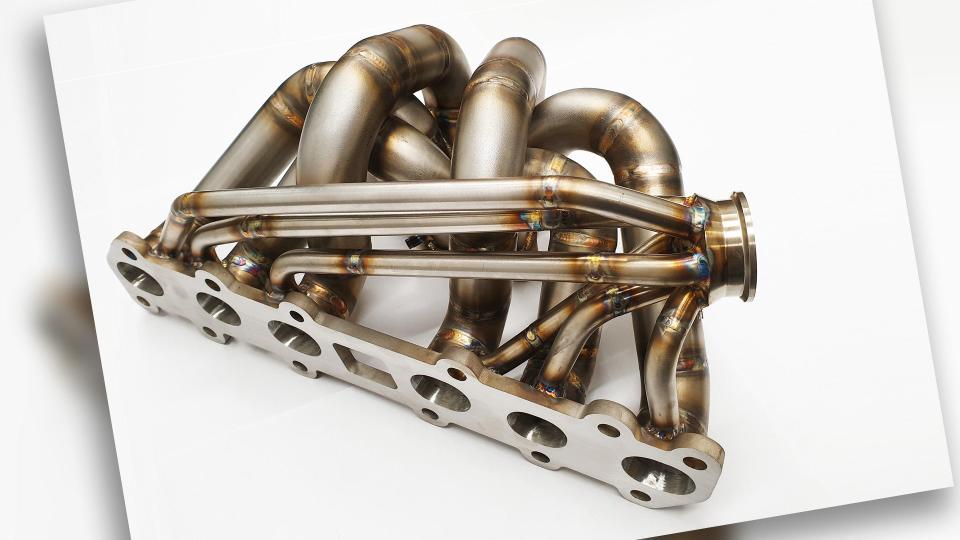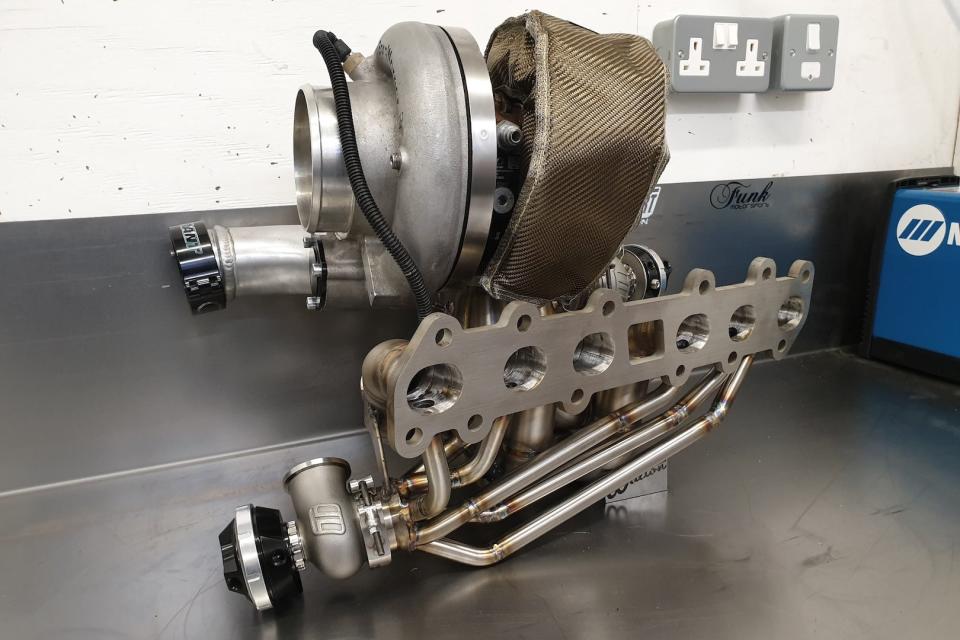This 2JZ Exhaust Manifold Uses the Opposite of EGR for Anti-Lag

It's common for top-of-the-line exhaust manifolds to look like Medusa, but the one you see here is more like Medusa with a parasite. What's the deal? You might be wondering, along with how do I delete that EGR-lookin' thing for more power? Well, you've got that backwards, because those pipes aren't for emissions controls. They're key to a little-known type of turbo anti-lag that's probably coming to a tuning shop near you.
The manifold above was built British race shop Walton Motorsport, which says it has provided exhausts for rally cars, Le Mans, and even a championship-winning Formula 1 team. Suffice to say, this manifold has a secondary pipe coming off each exhaust runner for a reason. They look like they'd be for sending exhaust somewhere, perhaps through a second turbo or back through the engine for exhaust gas recirculation (EGR). But their role is the very opposite: Let in clean, un-combusted air.

You're looking at the workings of a form of anti-lag called fresh air (or bypass) anti-lag. Anti-lag is used to negate turbo lag by delaying ignition timing so combustion happens as the air-fuel mix leaves the cylinder, which keeps the turbo spooled with the throttle closed. This improves throttle response, which was historically a weakness of turbo engines.
Anti-lag is rarely seen outside top-level motorsport though, because it has big drawbacks. It can damage exhaust manifolds, turbochargers, and any emissions equipment downstream of them. Anti-lag also generates a small amount of horsepower while active, which can hurt drivability. It's also incredibly loud, making it completely unsuitable for a road car. But fresh air anti-lag works slightly differently. The principle is the same; combustion still happens in the exhaust manifold, but much of the air gets there another way. And how it's delivered has a big impact on the potency of the anti-lag itself.

 Yahoo Autos
Yahoo Autos